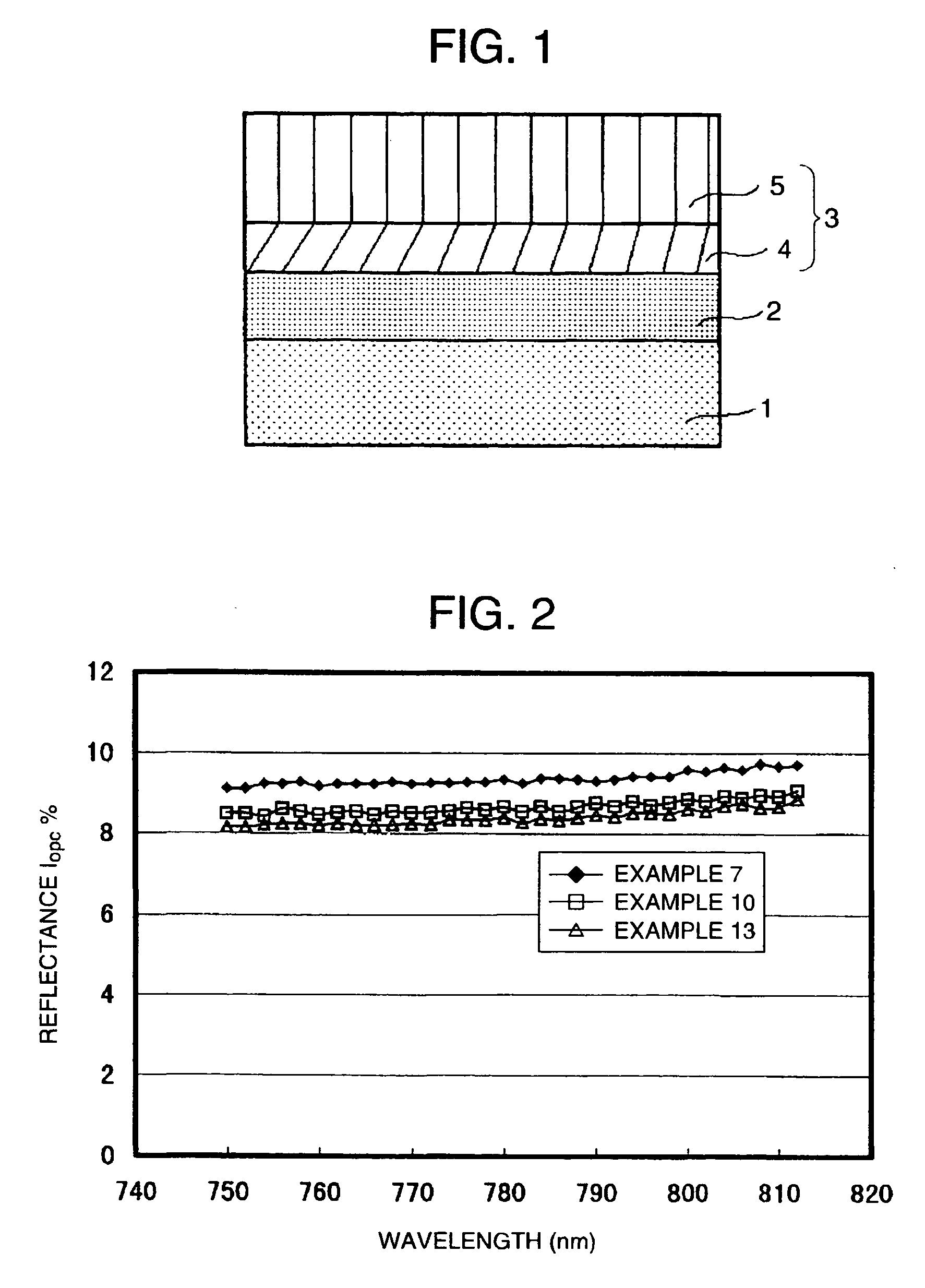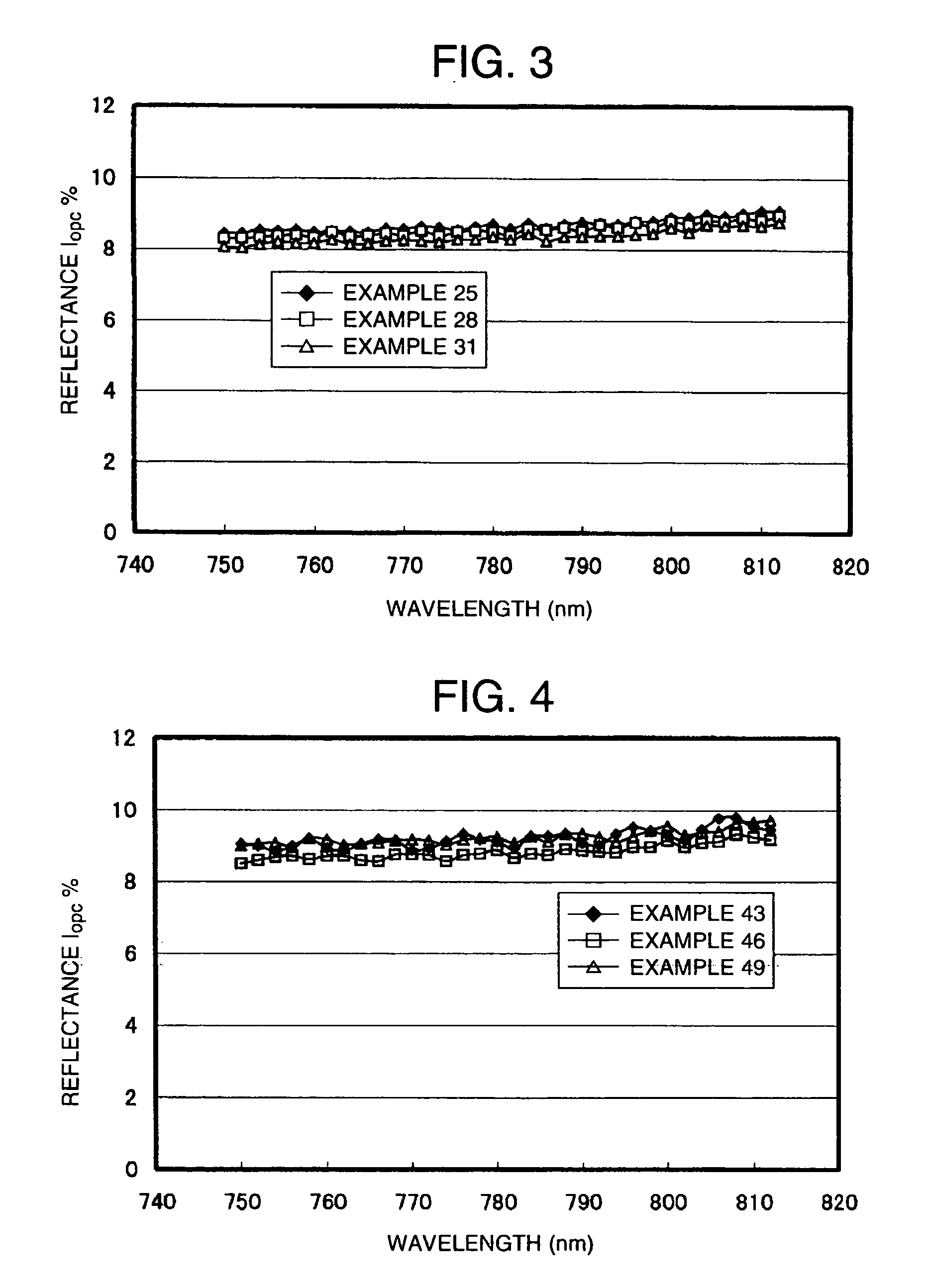Electrophotographic photosensitive member and judging method for interference fringes caused by electrophotographic photosensitive member
a photosensitive member and electrophotography technology, applied in the field of electrophotography photosensitive members, can solve the problems of deteriorating image quality, undulating intensity of reflected light, and often generated optical interferen
- Summary
- Abstract
- Description
- Claims
- Application Information
AI Technical Summary
Benefits of technology
Problems solved by technology
Method used
Image
Examples
example 1
(Surface Roughening of Substrate)
[0085] A surface of a cylindrical aluminum conductive substrate, employed as the conductive substrate, was sand blasted to form a rough surface having a reflectance Isb=13.6%, an average surface roughness Ra (JIS)=0.35 μm and a maximum surface roughness Rmax (JIS)=2.7 μm. The reflectance Isb is a ratio (%) of a surface reflectance of a roughened substrate and a surface reflectance of a mirror-surface treated plain pipe, and was measured with a reflectance measuring apparatus 16 as shown in FIG. 16, MCPD-200 manufactured by Union Giken Co. The surface roughness was measured by SURFCOM (trade name, manufactured by Tokyo Seimitsu Co.) with a reference length of 0.8 mm and a measuring length of 4 mm.
(Formation of Undercoat Layer)
[0086] Then, an undercoat layer is provided on the surface of the conductive substrate roughened by the sand blasting. The undercoat layer is produced by applying a coating liquid prepared by dispersing 1.8 parts by weight o...
example 2
[0090] An organic electrophotographic photosensitive member was prepared in the same manner as in Example 1, except that the charge transport layer employed in Example 1 was changed to a film thickness of 18 μm.
example 3
[0091] An organic electrophotographic photosensitive member was prepared in the same manner as in Example 1, except that the charge transport layer employed in Example 1 was changed to a film thickness of 14 μm.
PUM
 Login to View More
Login to View More Abstract
Description
Claims
Application Information
 Login to View More
Login to View More - R&D
- Intellectual Property
- Life Sciences
- Materials
- Tech Scout
- Unparalleled Data Quality
- Higher Quality Content
- 60% Fewer Hallucinations
Browse by: Latest US Patents, China's latest patents, Technical Efficacy Thesaurus, Application Domain, Technology Topic, Popular Technical Reports.
© 2025 PatSnap. All rights reserved.Legal|Privacy policy|Modern Slavery Act Transparency Statement|Sitemap|About US| Contact US: help@patsnap.com



